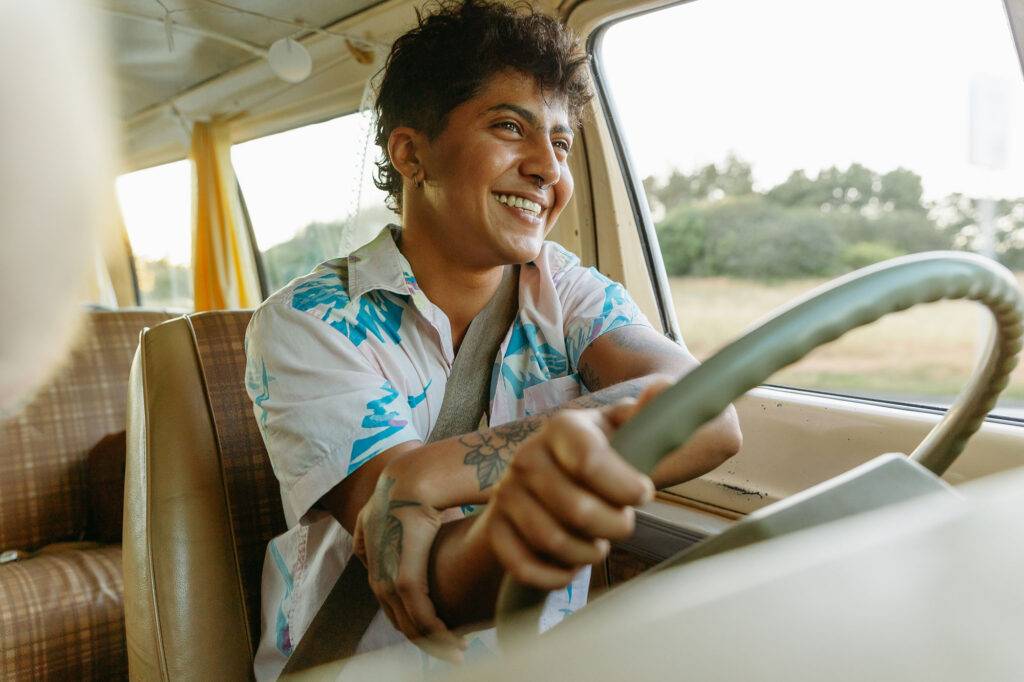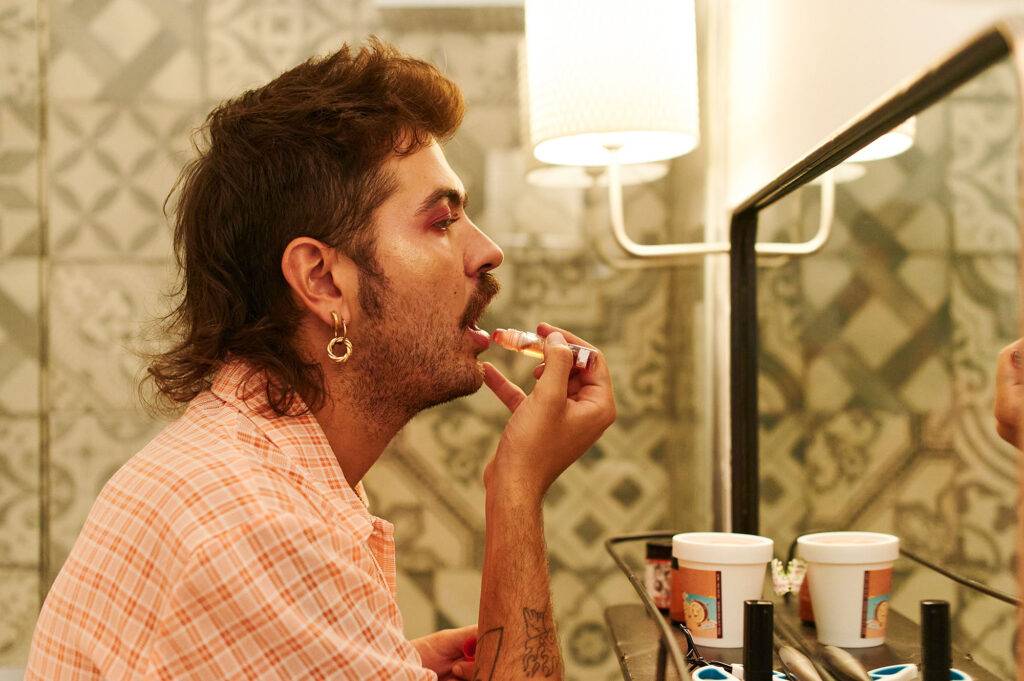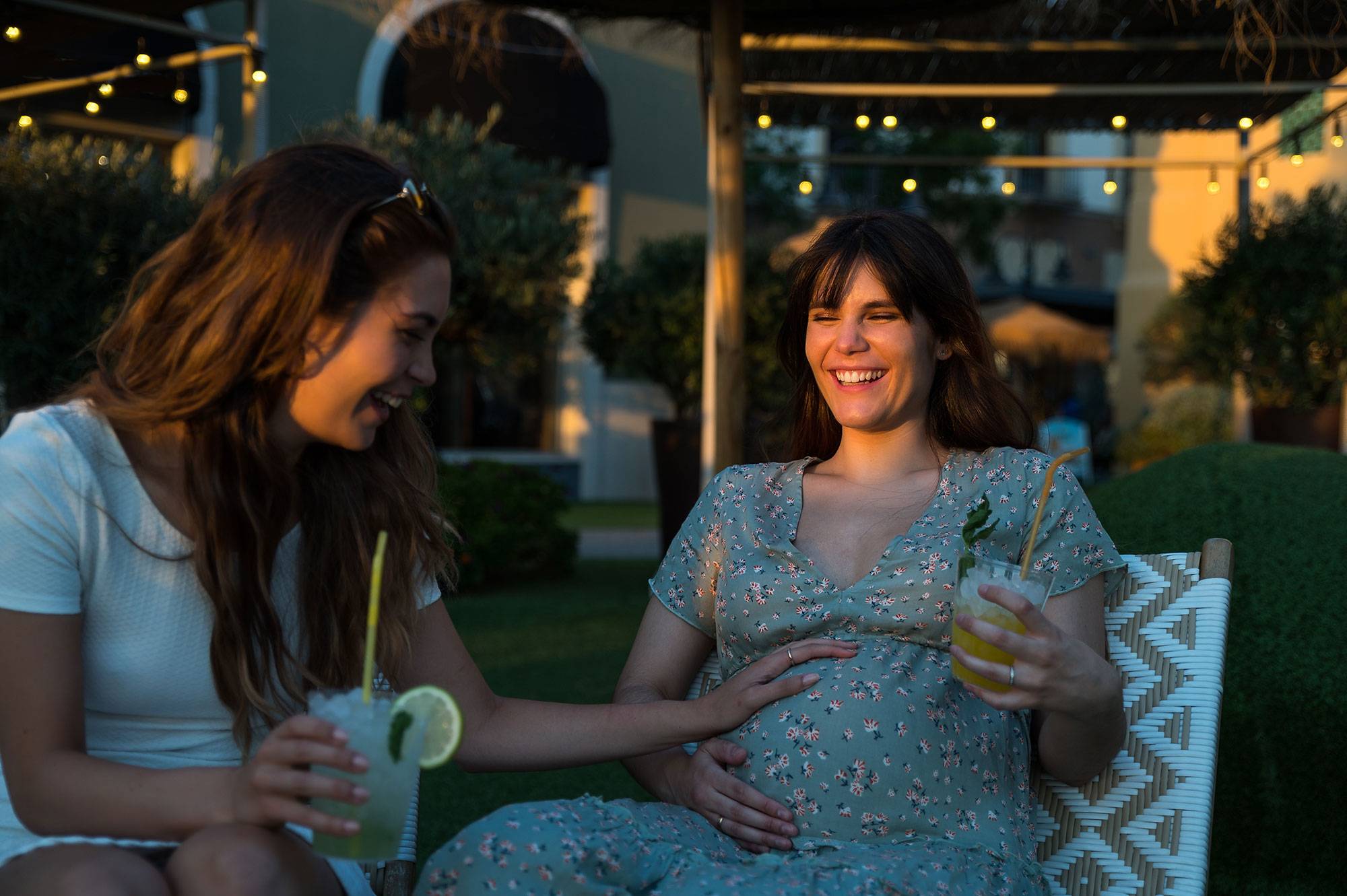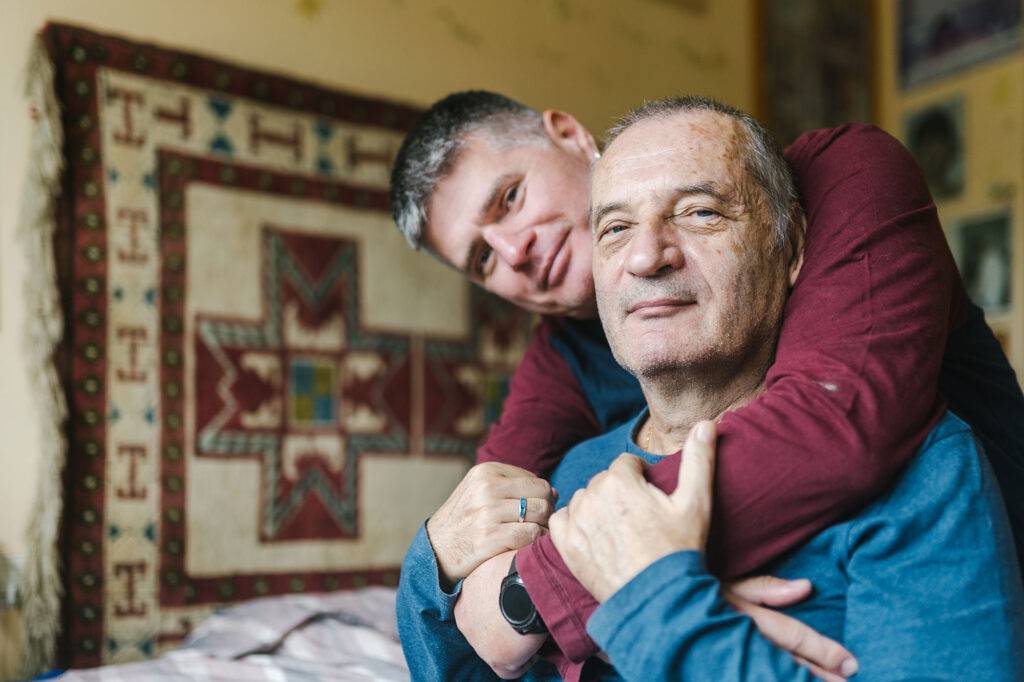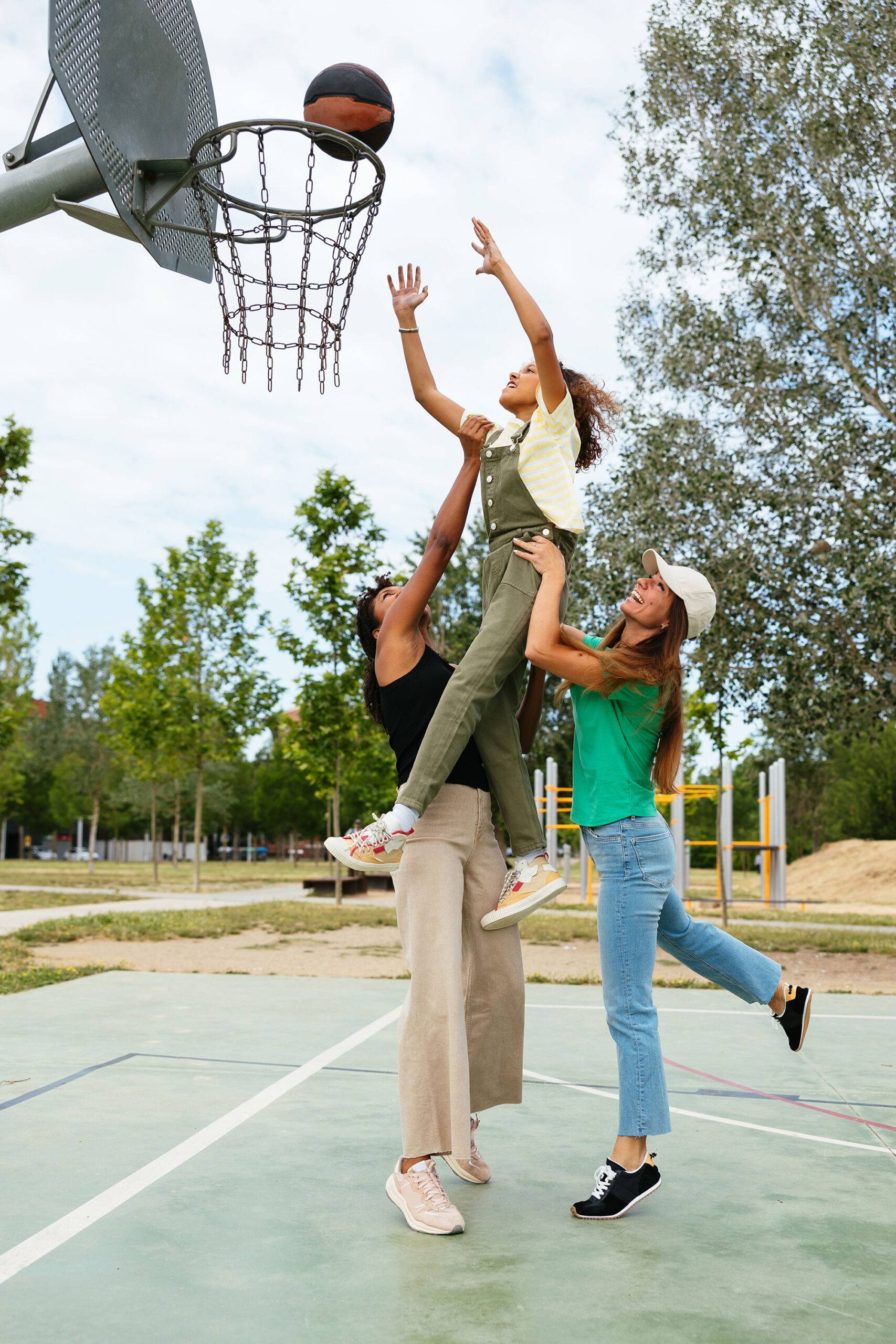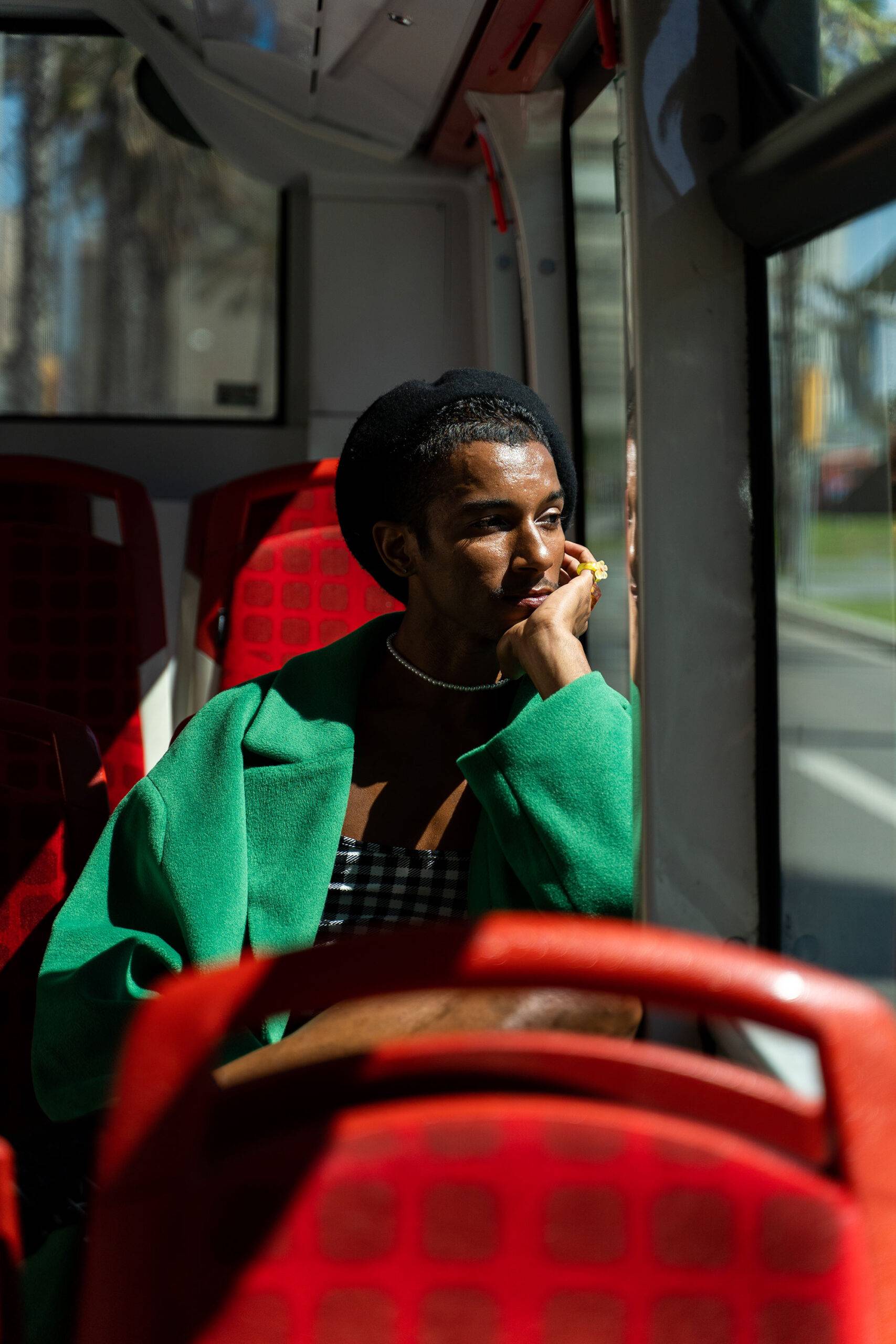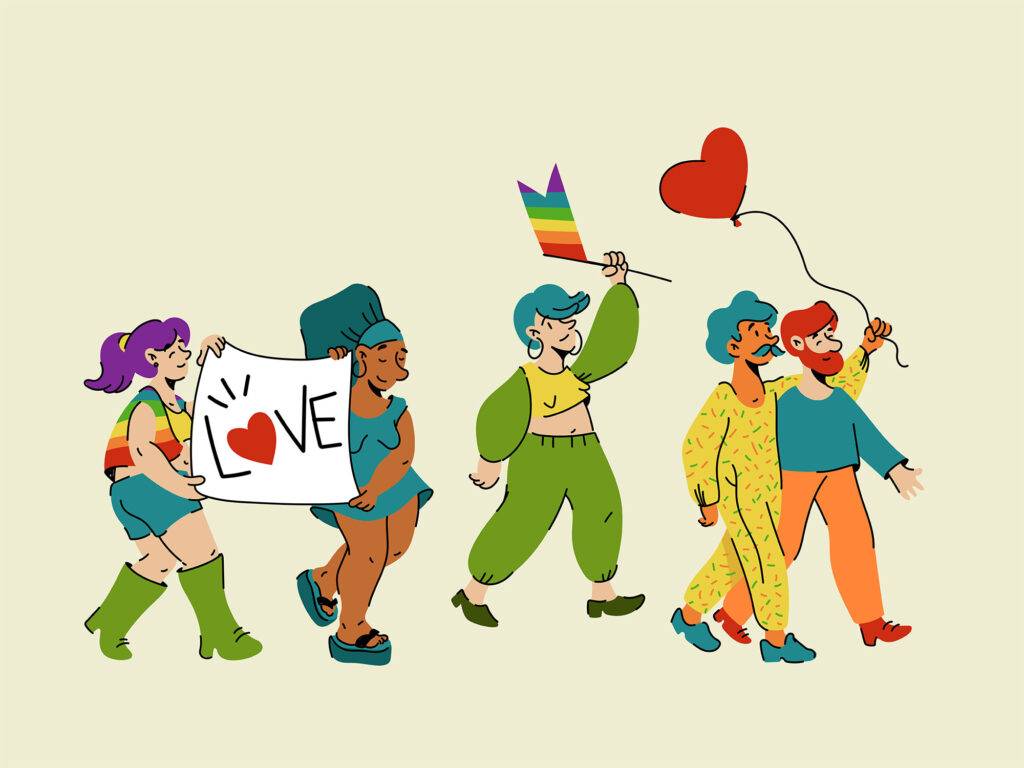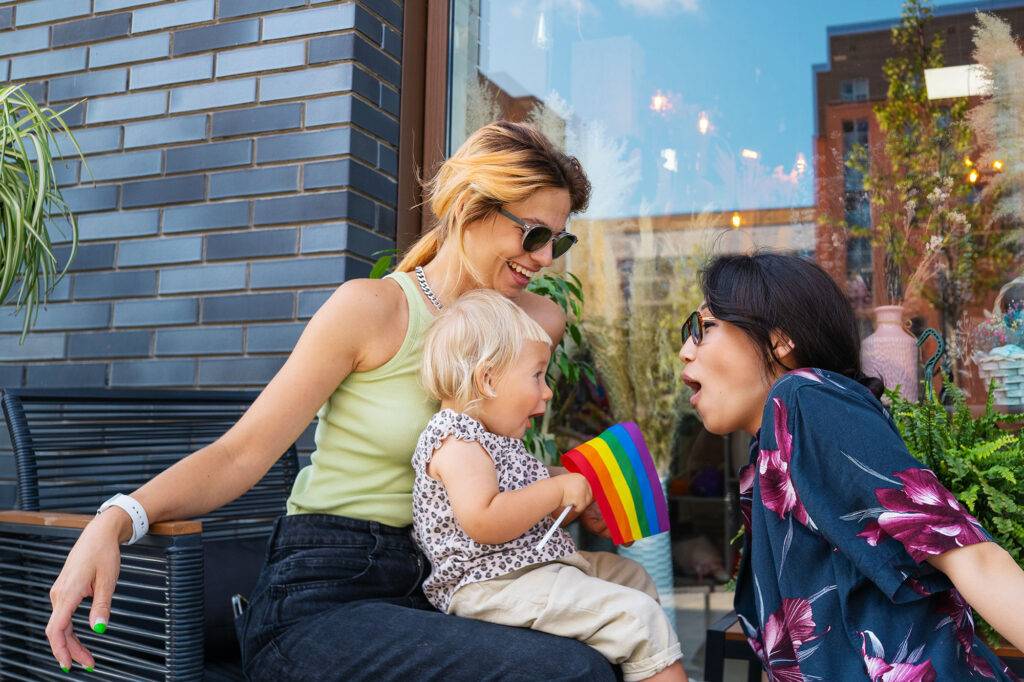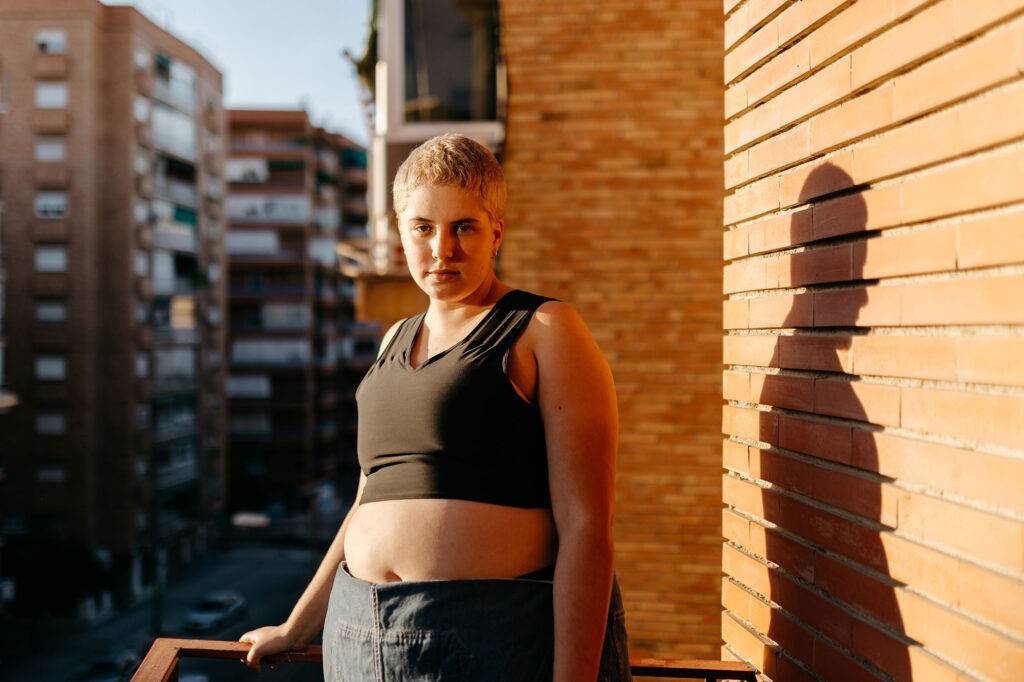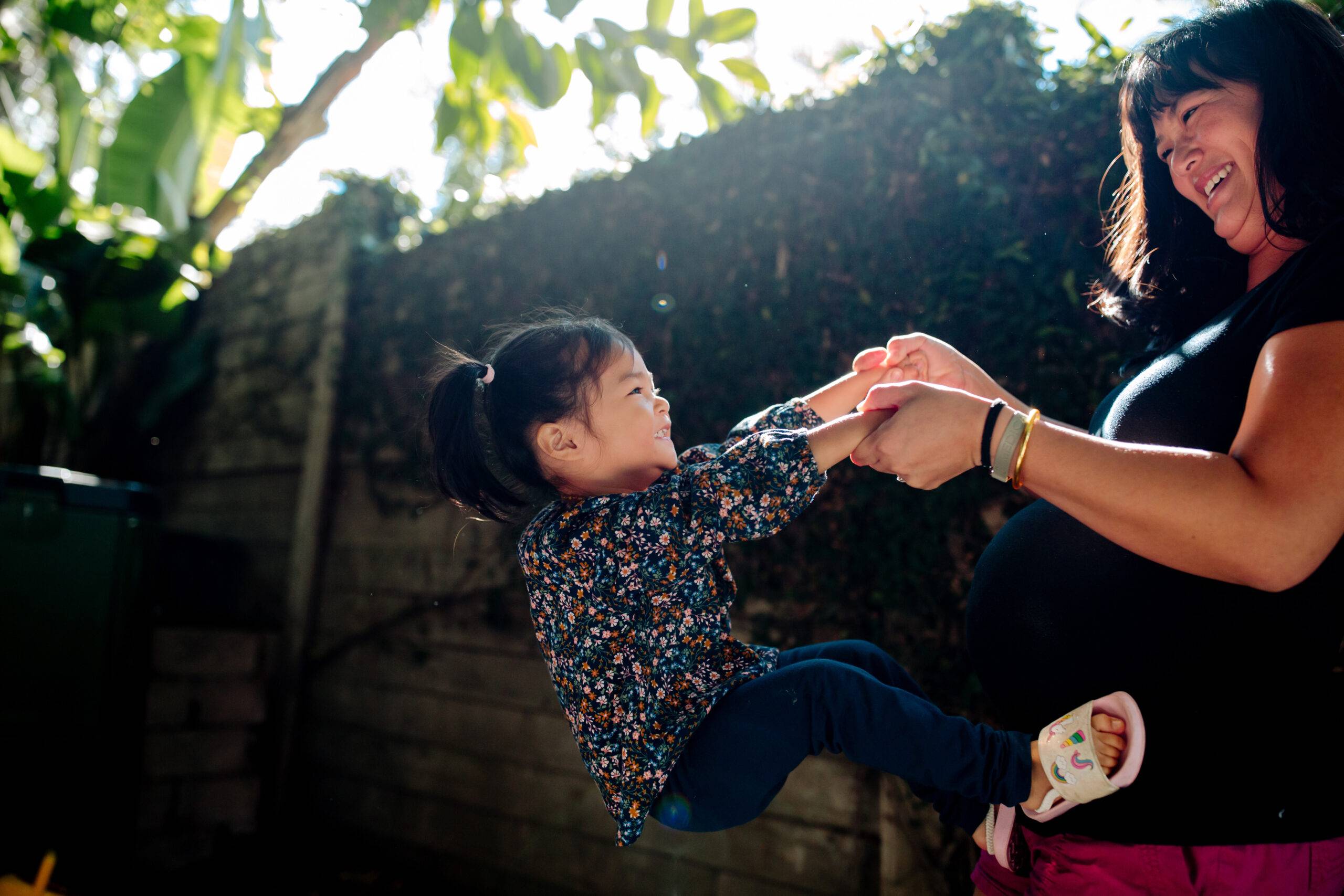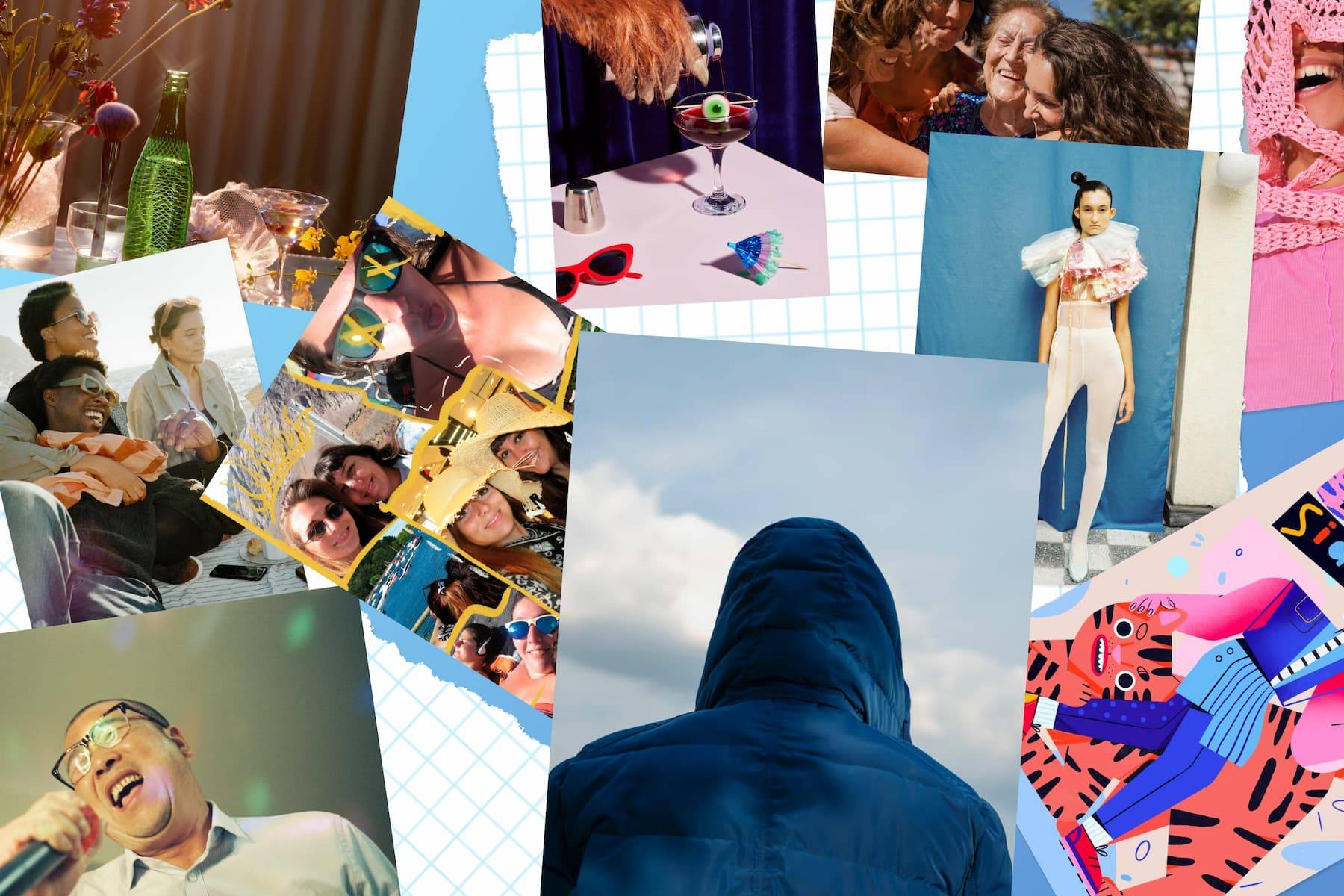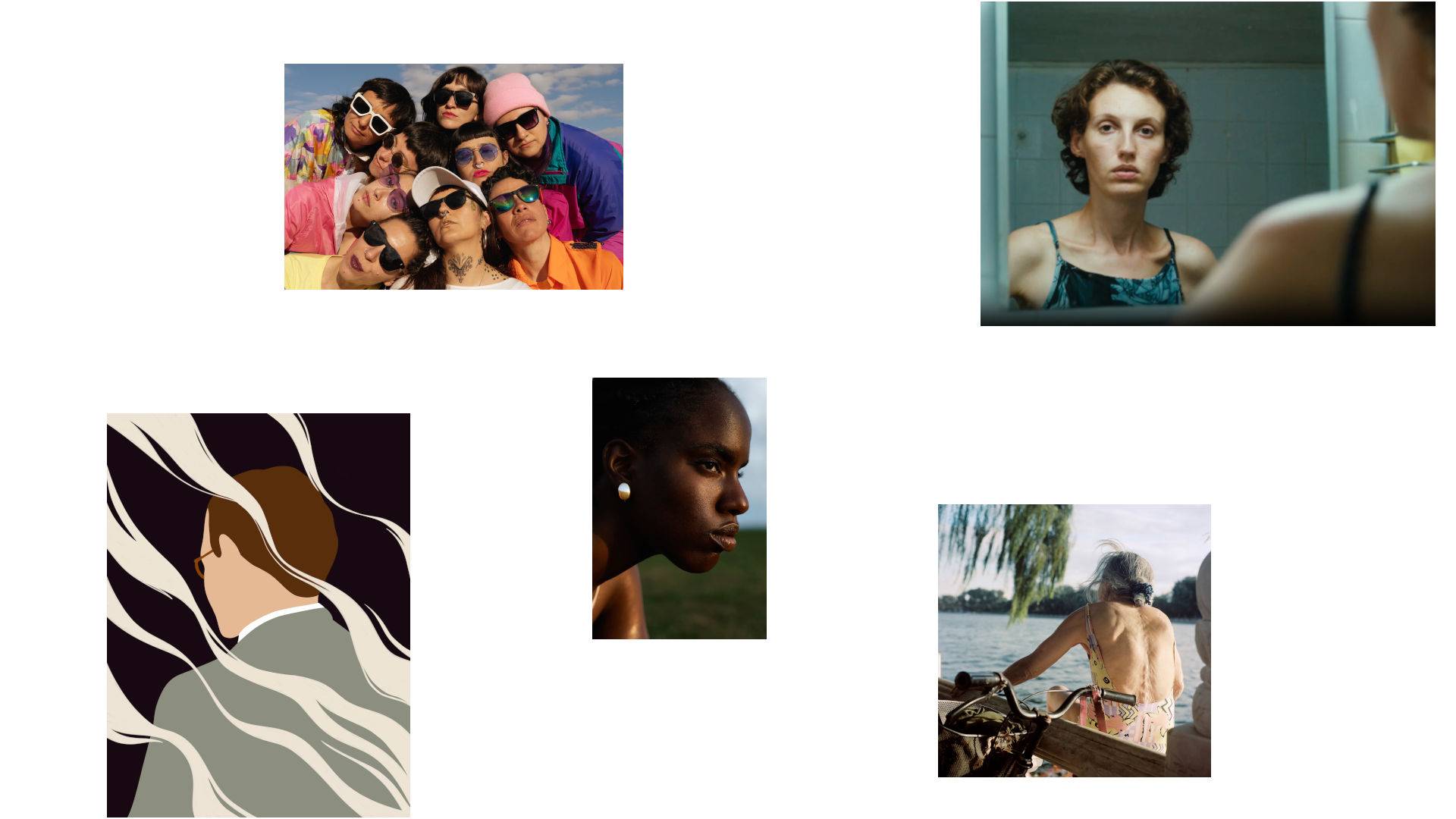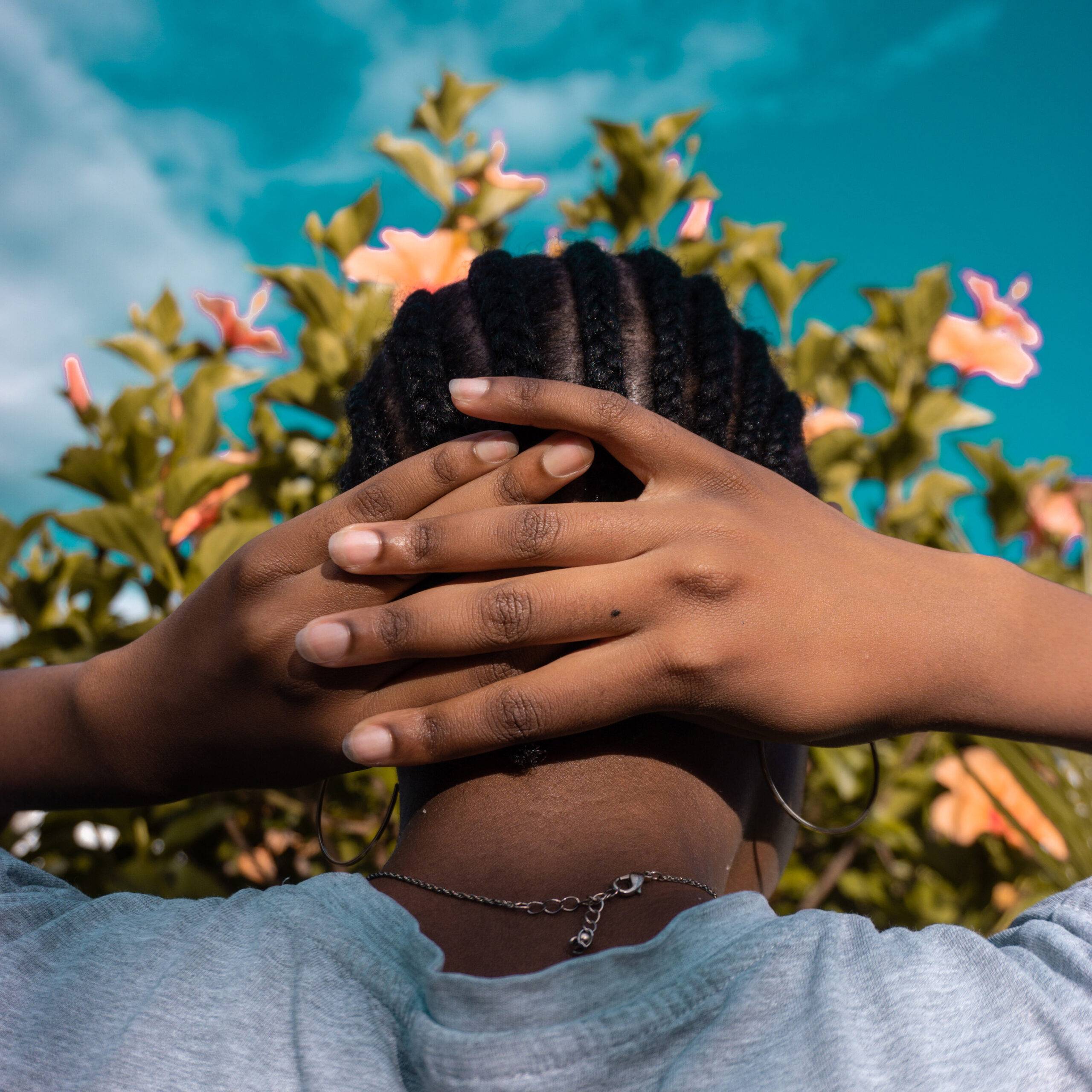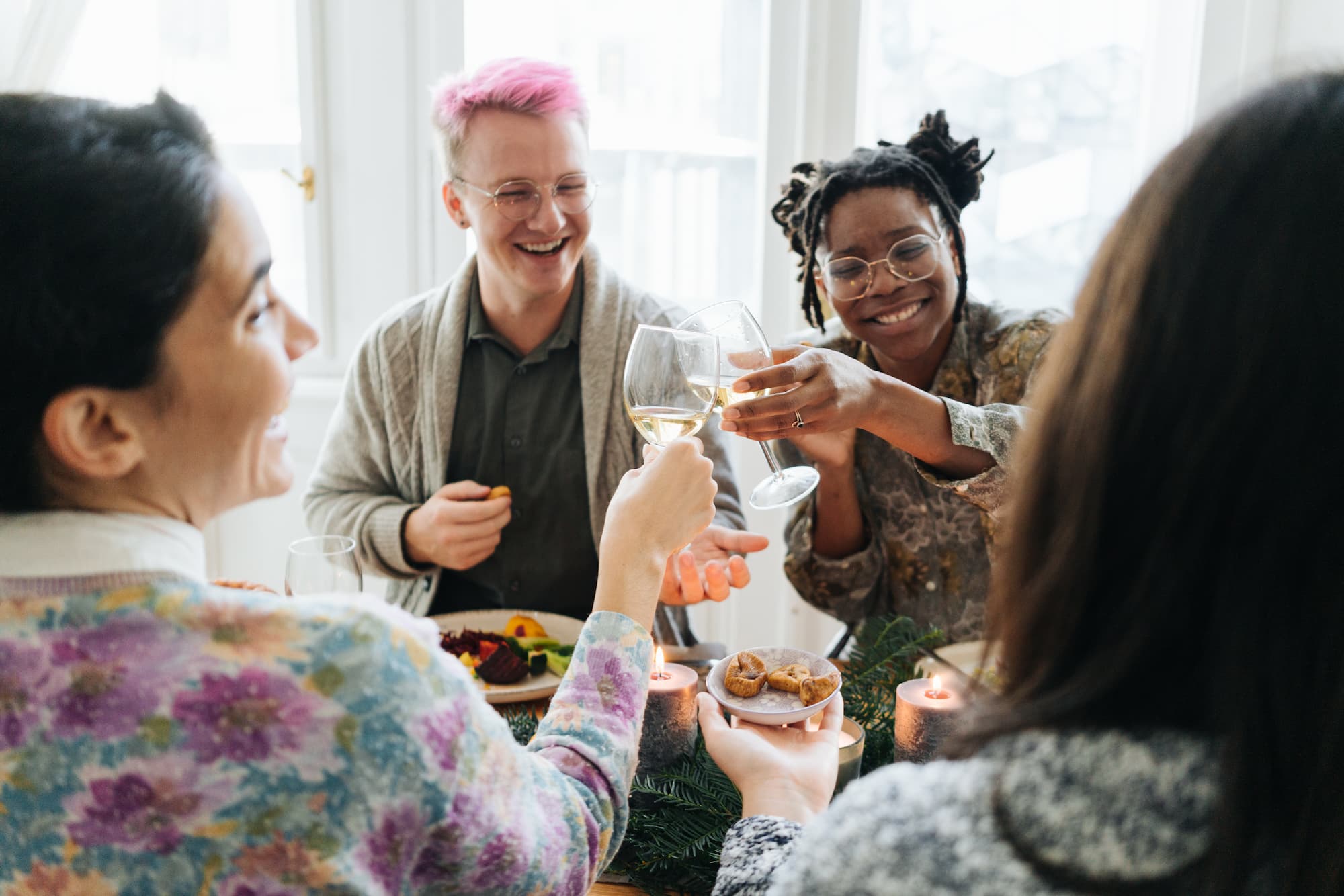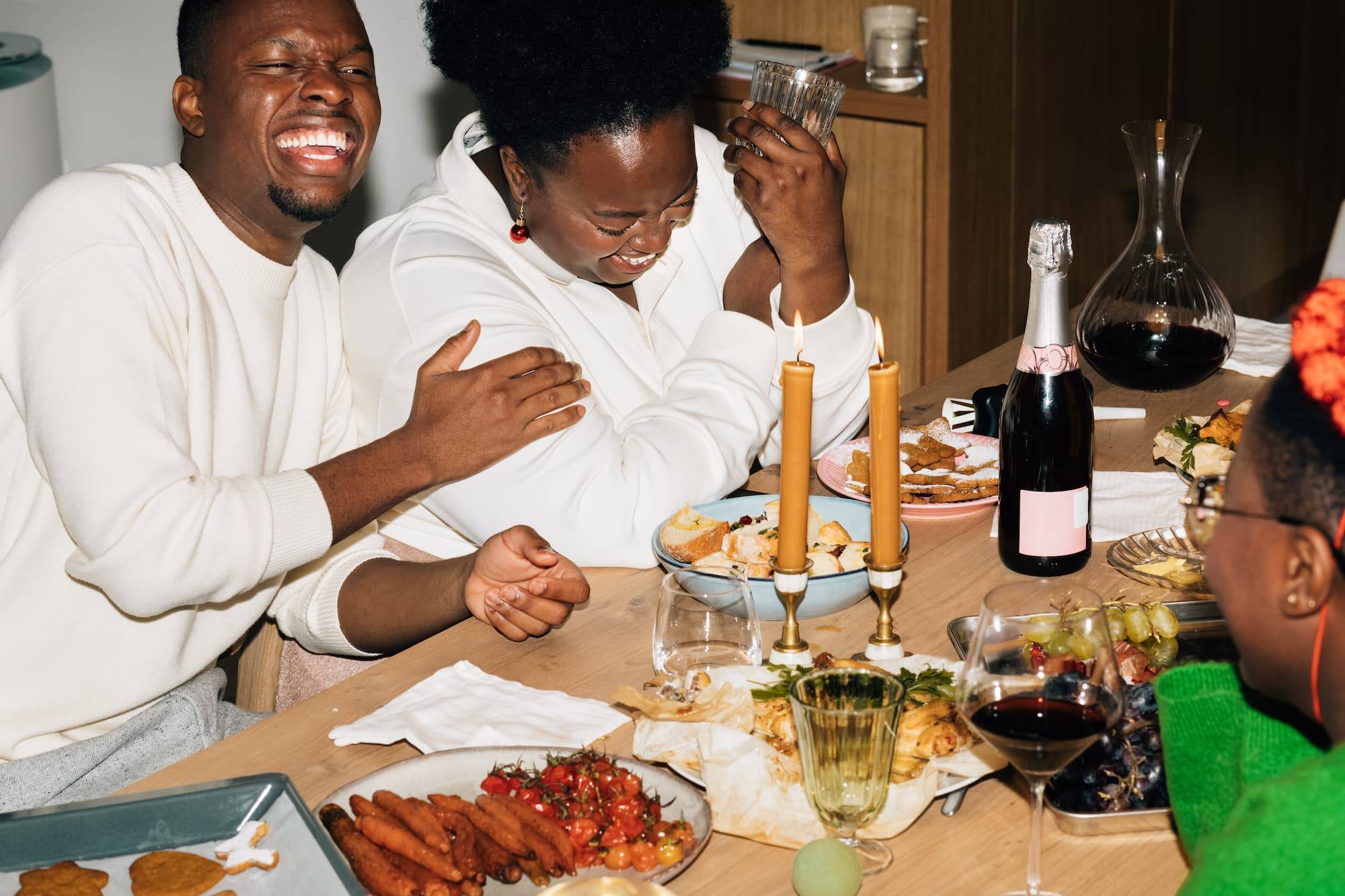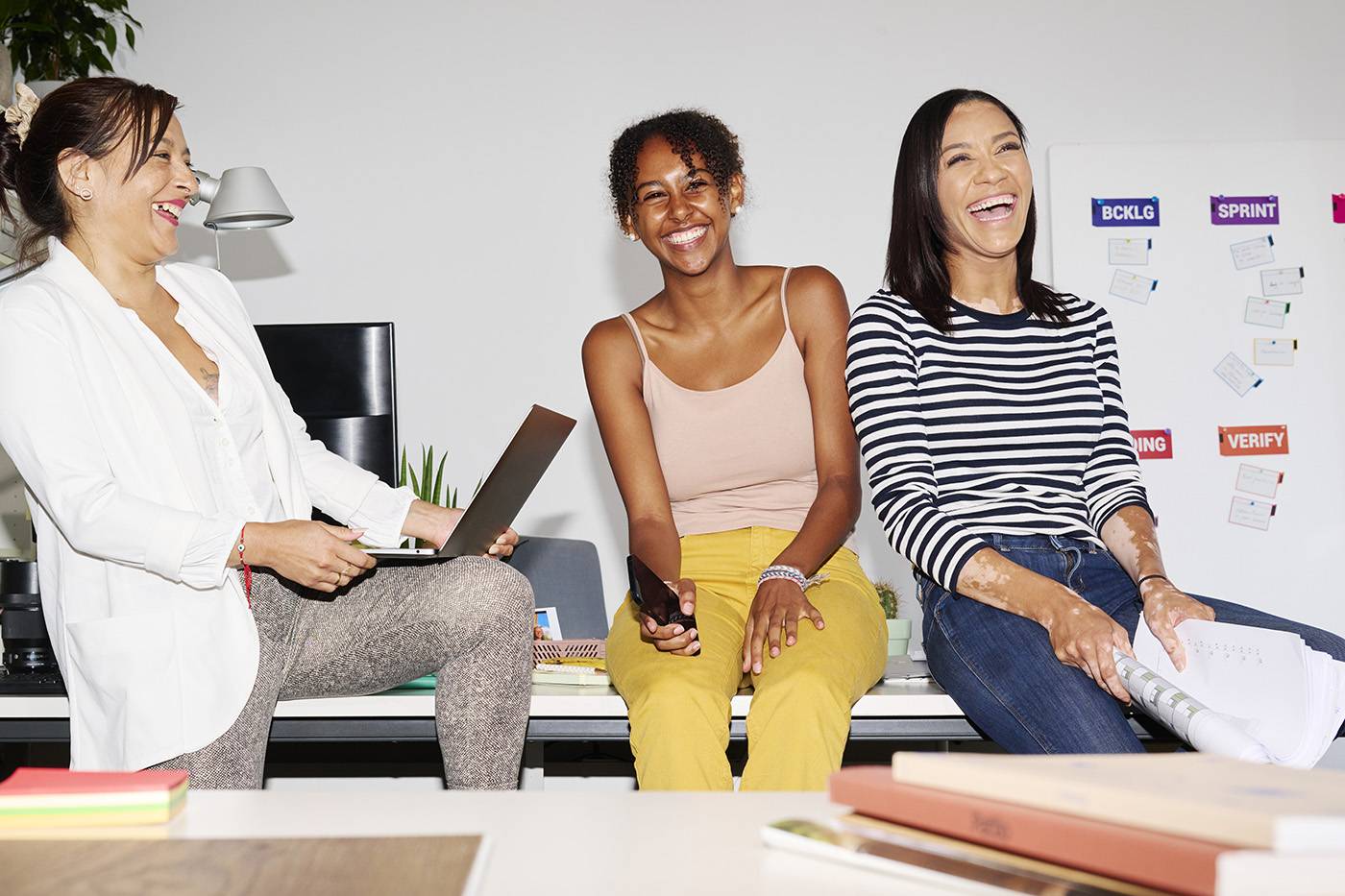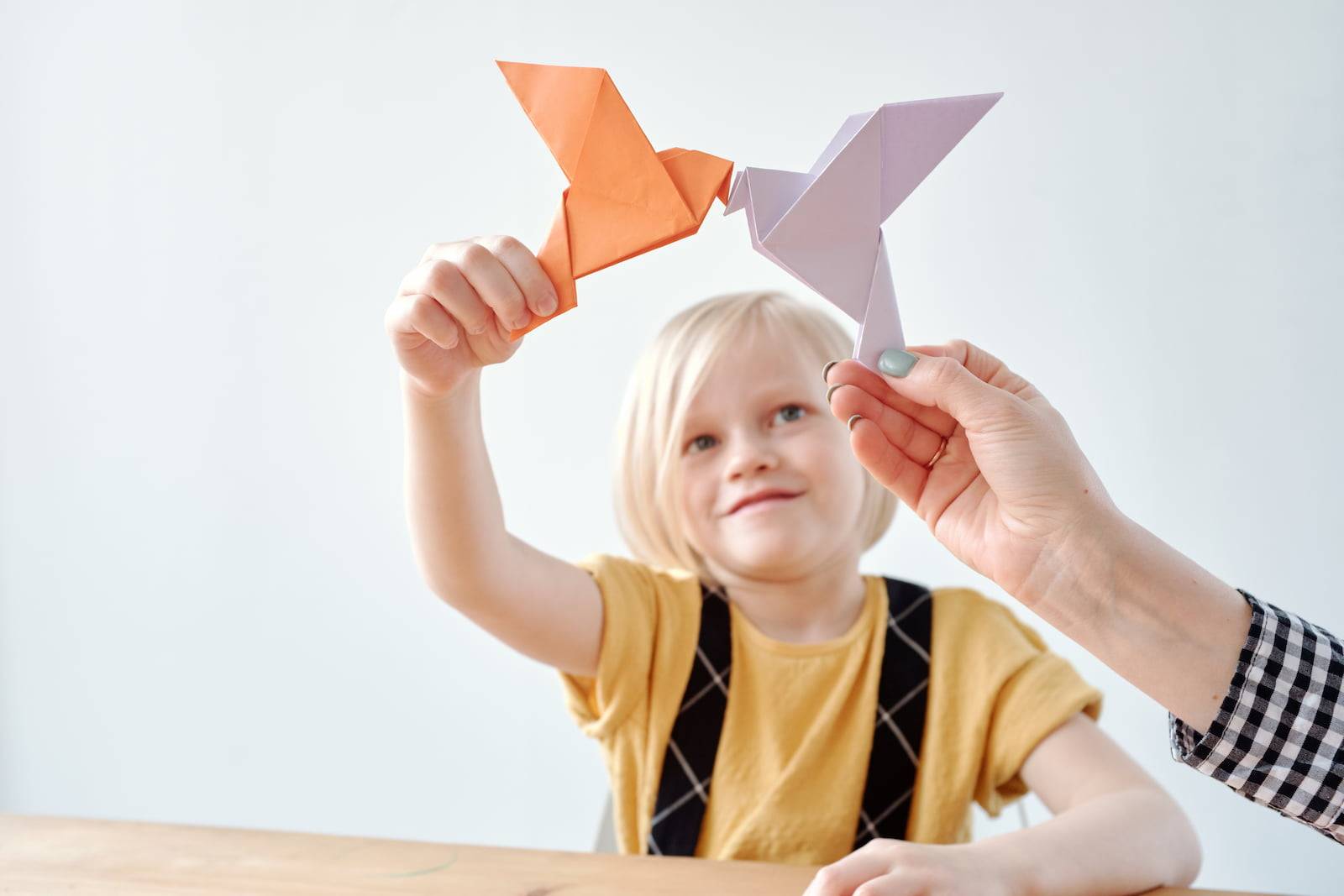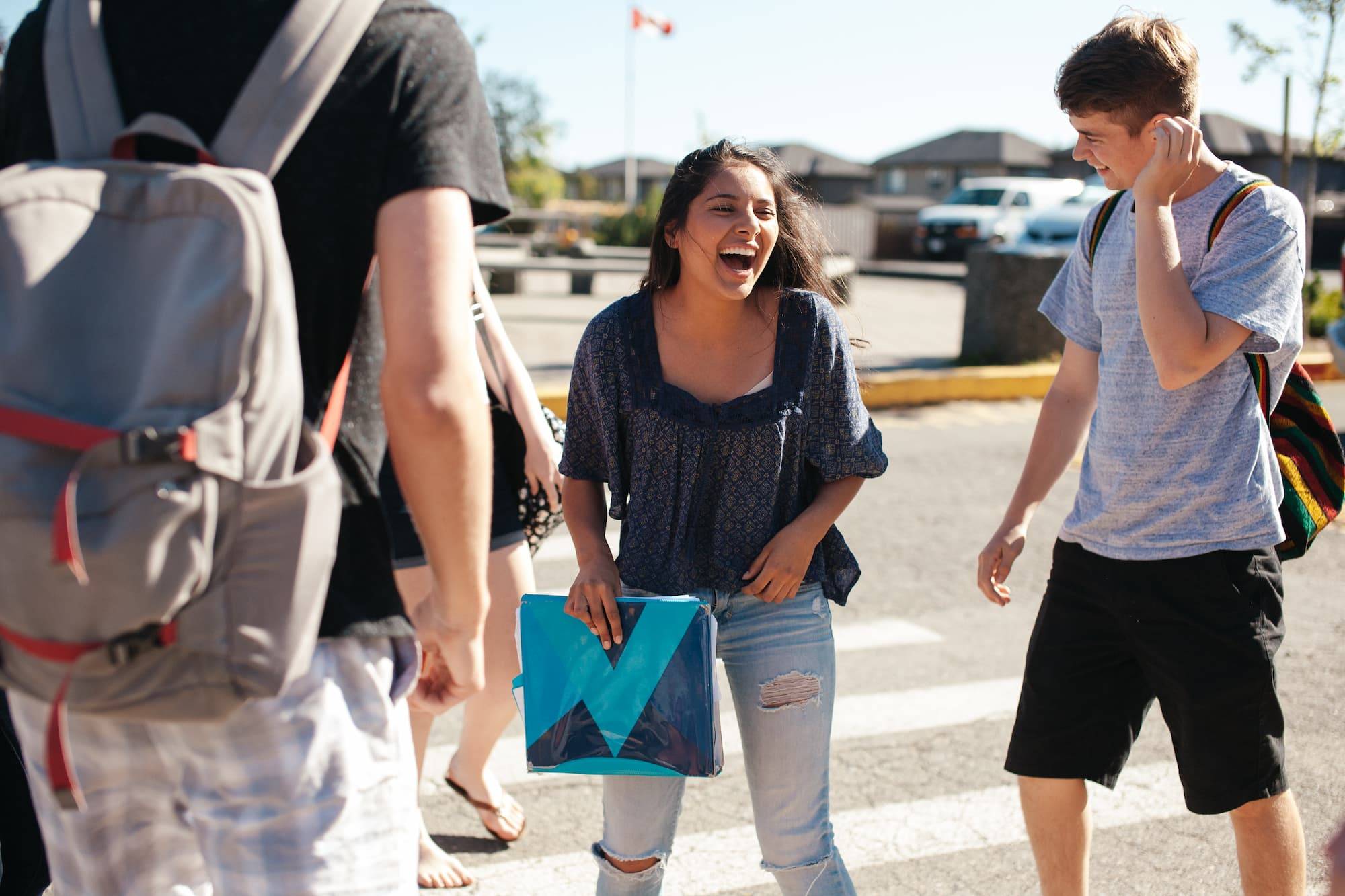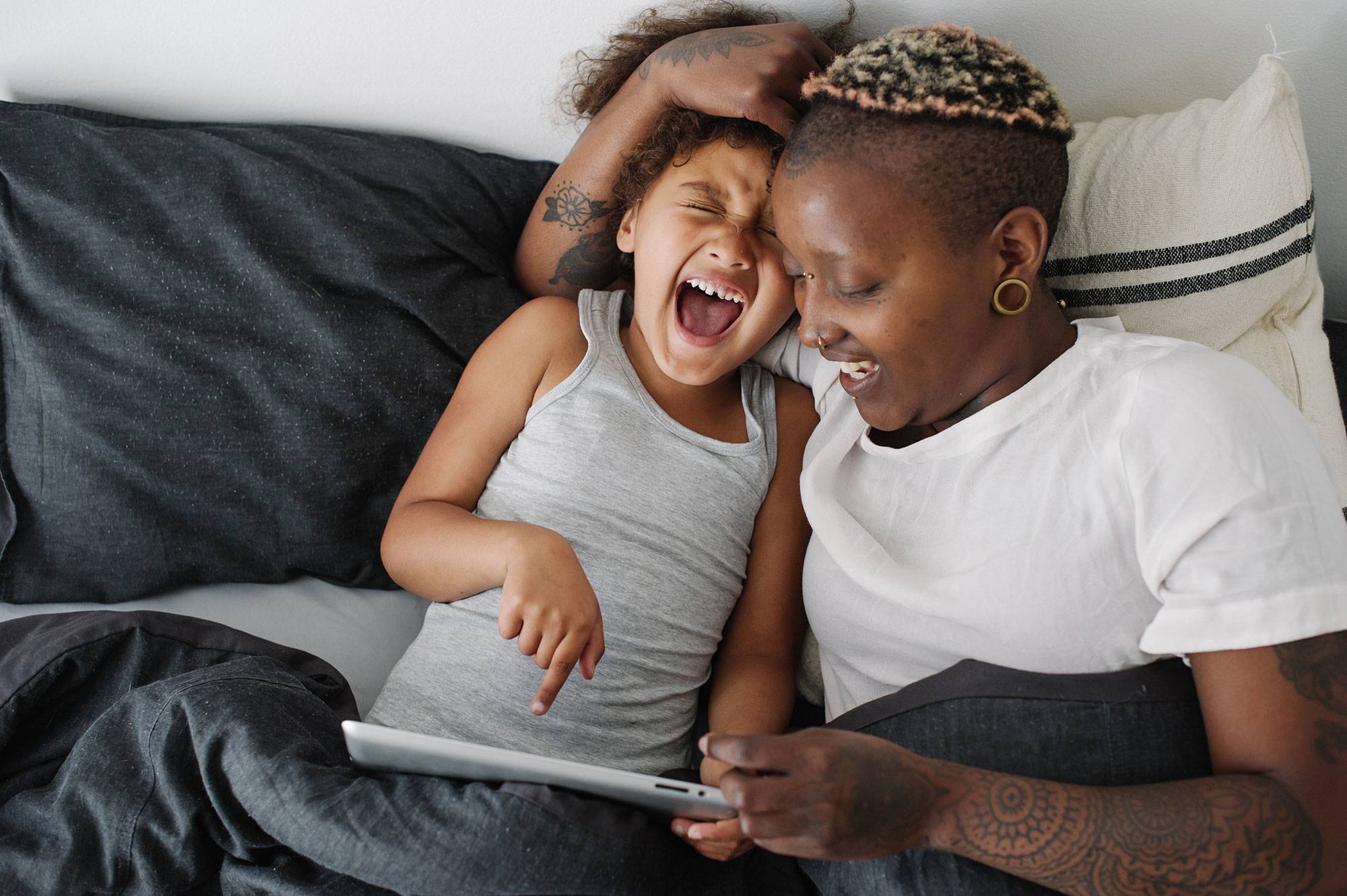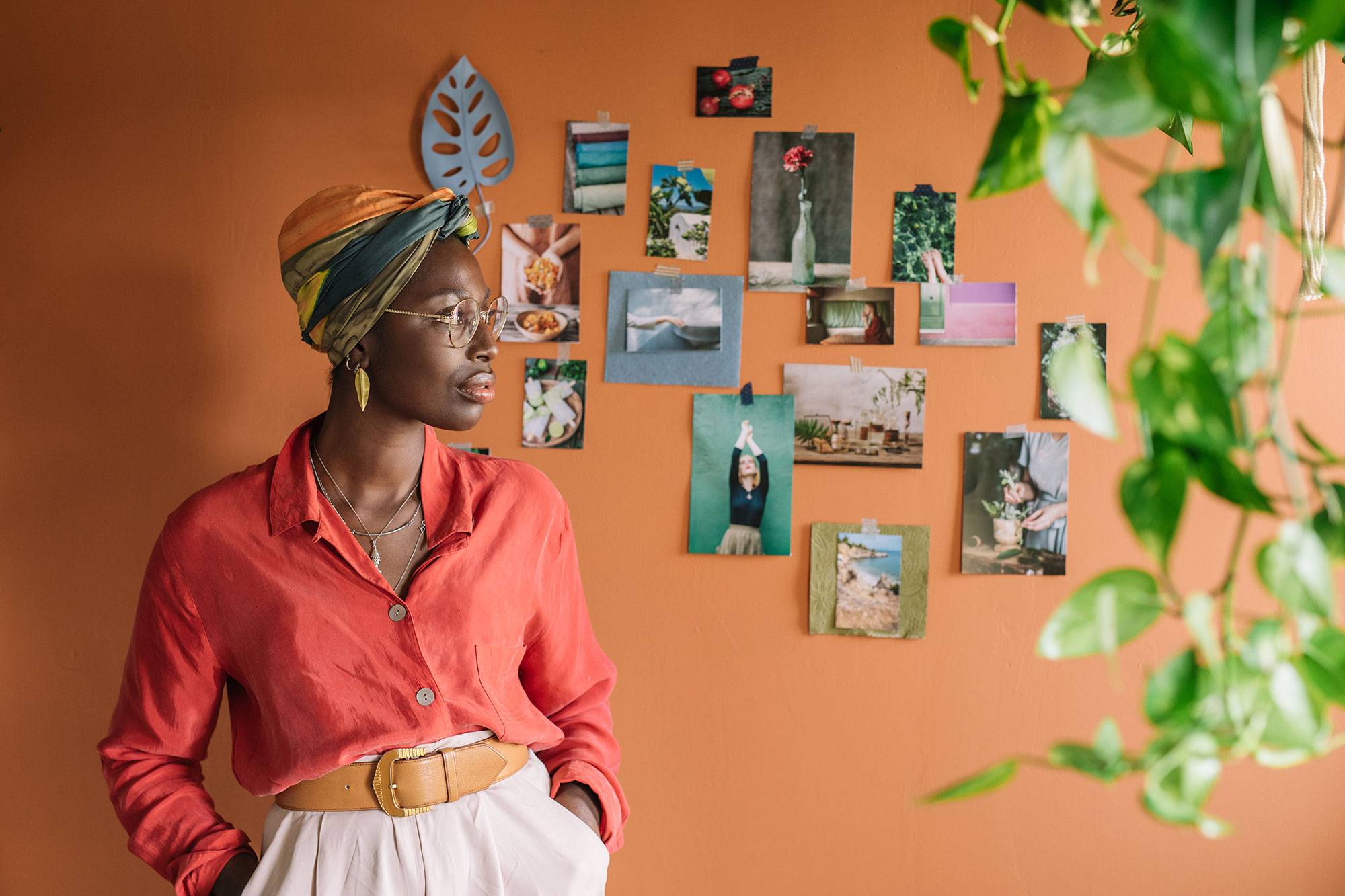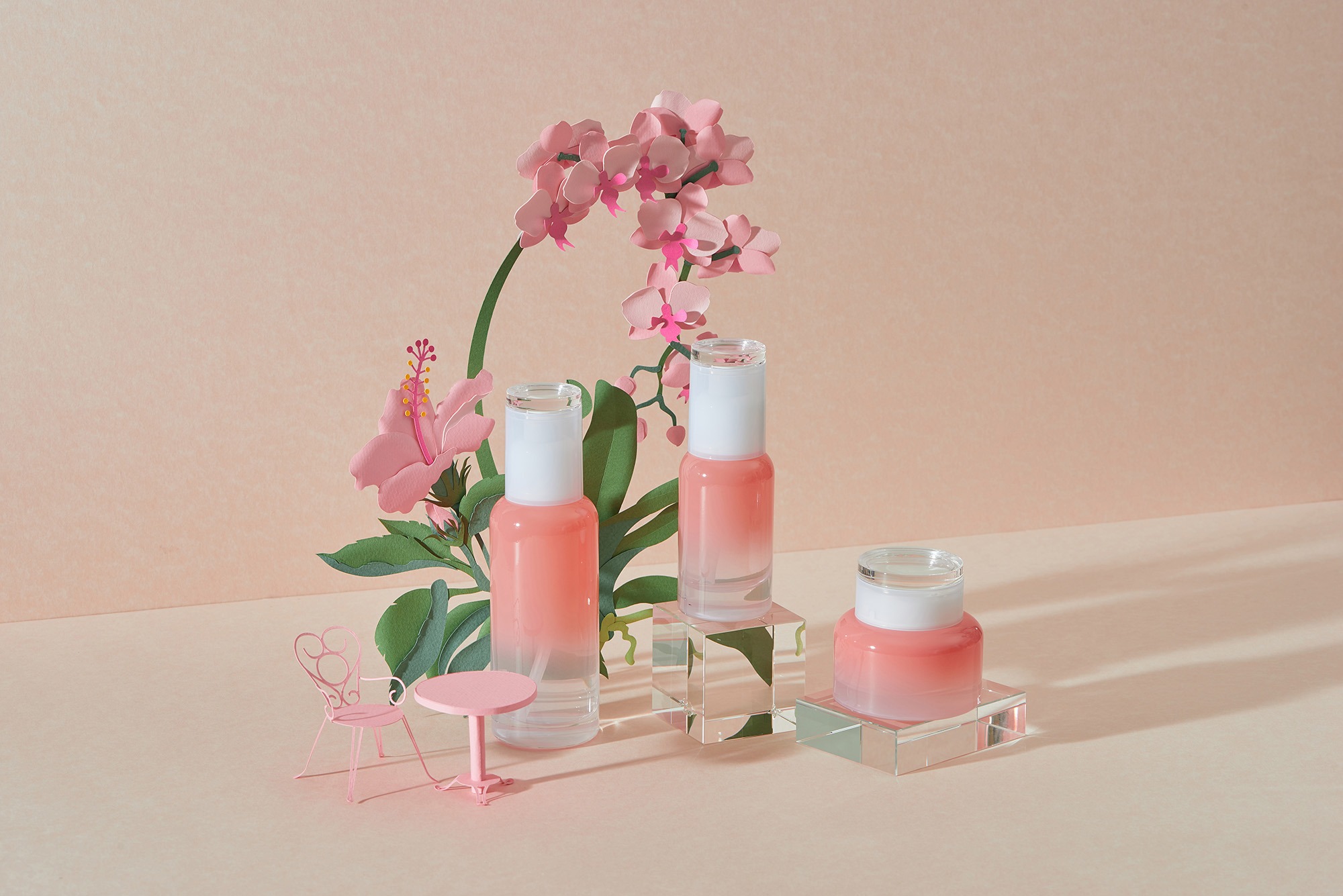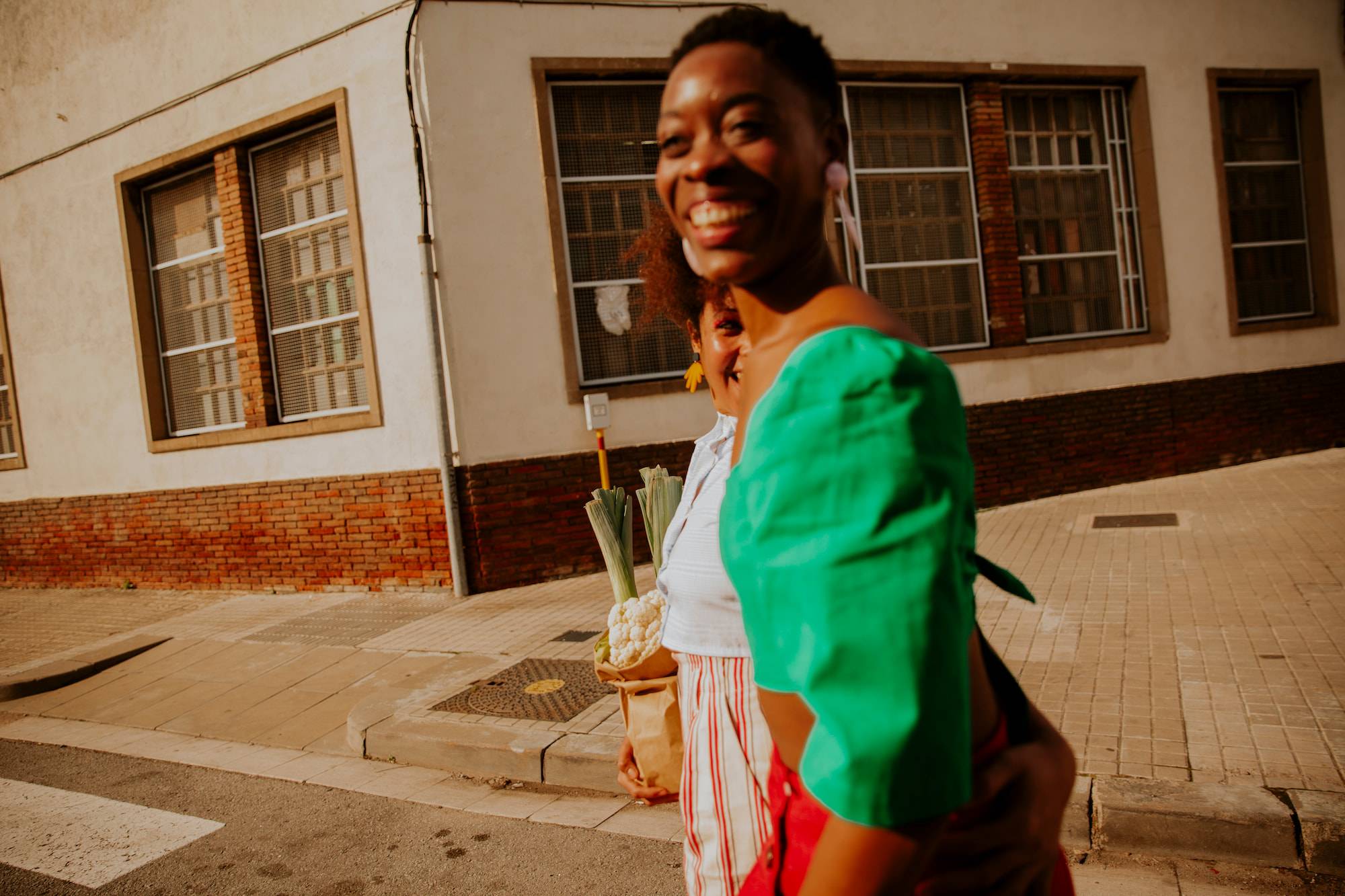Pride month is a time to celebrate the diversity and incalculable contributions of the LGBTQ+ community, but it’s also an opportunity to step back and think about how we better represent the LGBTQ+ community in all aspects of our society, especially media content.
What does better visual representation mean for this community?
In visual and advertising media, there’s often a tendency to rely on a limited set of signifiers to represent LGBTQ+ people and identities—rainbow flags, androgynous fashion, theatrical gender presentations, intimate couples, etc.
What we’re often missing is the representation of a fuller range of relationships, lived experiences, and lifestyle themes.
To add depth and breadth to the representation of LGBTQ+ people and communities, we need to think outside of Pride month symbolism and make inclusivity present in every campaign. We need to go beyond stock tropes.
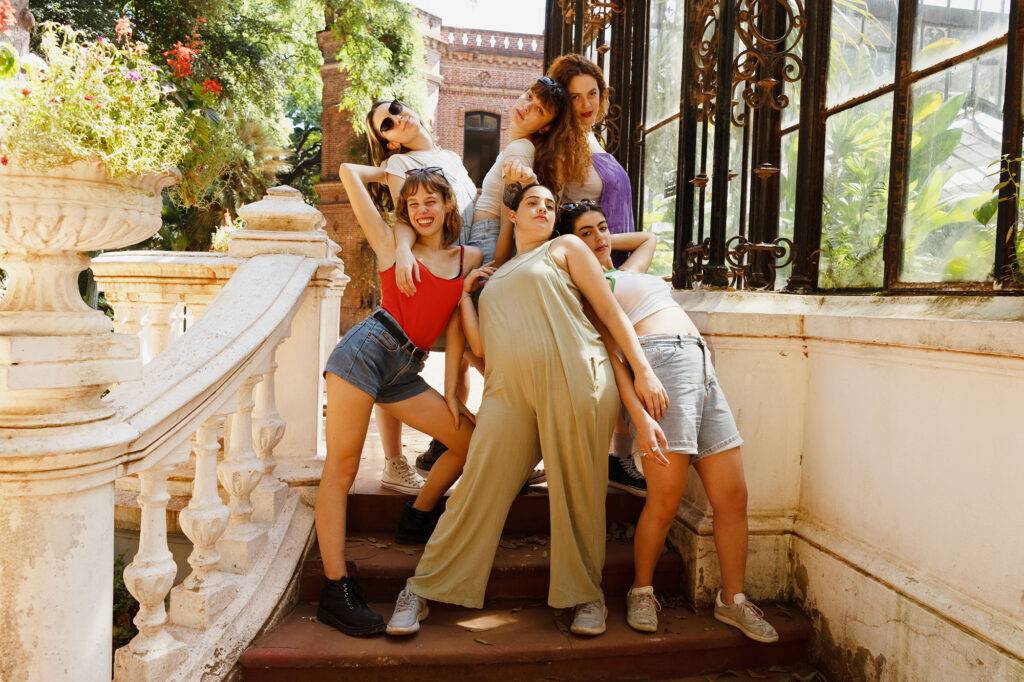
Don’t plan a campaign about diversity. Plan a campaign about a concept and cast diverse models.
1 – Defy gender norms
Be inclusive of gender identities that demonstrate a diversity of expression beyond the binary (male/female) framework.
Although non-binary, genderqueer, and third gender identities are common, mainstream media often fails to accurately represent non-binary individuals. The images and messages portrayed in media tend to reinforce unrealistic and limiting stereotypes, which can be harmful to the non-binary community.
2 – Show families
Show LGBTQ+ families in everyday life to normalize diverse families in media representation. Such as:
- Day-to-day life: eating meals together, getting ready for the day, shipping off to daycare or school, bedtime, family bonding, games
- Pregnancy, birth, surrogacy, IVF, adoption
- Quality time with family & extended family (grandparents, aunts and uncles, cousins, etc.)
- Vacations
- Milestone moments like birthdays, graduations
3 – Show chosen families
Chosen families are close relationships people build with friends, partners, and allies who offer support, love, and acceptance, in place of or in addition to biological family members.
Mainstream media is talking more about the existence and significance of these relationships in LGBTQ+ communities, challenging traditional family structures and promoting acceptance and inclusivity.
See examples in our Chosen Families collection.
4 – Show everyday life
Showing LGBTQ+ people in everyday normal situations helps to create a more inclusive and accepting society where individuals are valued and respected regardless of their sexual orientation, gender identity, or gender expression.
- Managing home logistics – finances, groceries, chores, etc.
- Engaging with friends, pets, plants
- Buying real estate, renting an apartment, moving
- Making major purchasing decisions
- Cooking and eating meals together
- Marriage, seeking relationship help, divorce
- Celebrating milestones
- Traveling together
- Saving for & enjoying retirement
- Middle-aged and senior couples
See examples in our Reflect Everyday Pride collection.
5 – Go beyond the rainbow
Consumers are becoming more critical of “rainbow washing.”
Advertising with rainbows during Pride Month can be seen as performative and disingenuous. As a result, many companies are shifting their focus to promoting diversity and inclusion through more meaningful action and visuals. Some important topics in LGBTQ+ activism:
- New threats to long fought-for civil rights like marriage equality and reproductive freedom
- Access & equality in healthcare, the workplace, and housing
- Sports participation
- Refusal of service
- Support for LGBTQ+ youth
- Trans rights
- Peaceful protests and resistance to growing violence against LGBTQ+ people
You can still use the flag, but here are some suggestions:
- Use the correct version
- Show the flag in real places, like where it might be on display in your own city
- Explore LGBTQ+ concepts through illustration and creative still life
Don’t fake it. Aim for
Authenticity.
6 – Be a good ally
If you or the company you represent aren’t a member of the LGBTQ+ community, you can still create and amplify inclusive content – but to represent these themes authentically and respectfully, seek out and prioritize LGBTQ+ individuals as participants (models, creatives, editors, producers, etc.) throughout the creative process.
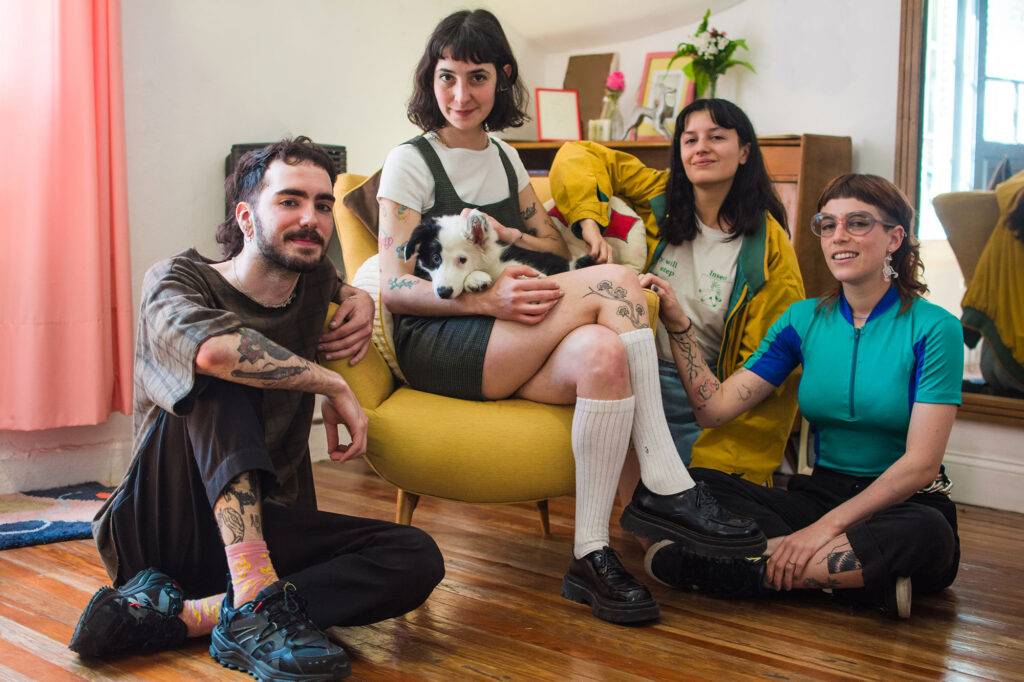
7 – Consider the full LGBTQ+ spectrum
Searching for LGBTQ+ representation in stock requires many terms that cover a full spectrum of identity. When searching for images or footage on Stocksy, all of the terms that represent the full spectrum of gender and sexual identities have been connected for search purposes – simply adding “LGBTQ” to your search will surface related content.
For example, if you were looking for family lifestyle content with LGBTQ+ identifying models, search for: “lgbtq family.” From there you can narrow your search using search facets for specific countries, ethnic identities or age groups.
We also have a search filter for LGBTQ+ people who identify as non-binary. Selecting this facet would not necessarily be inclusive of trans and other queer identifying people, so should only be used when searching exclusively for non-binary identifying models. To view the full spectrum of all LGBTQ+ community members, it’s best to search all genders and use the search term “LGBTQ” as above.
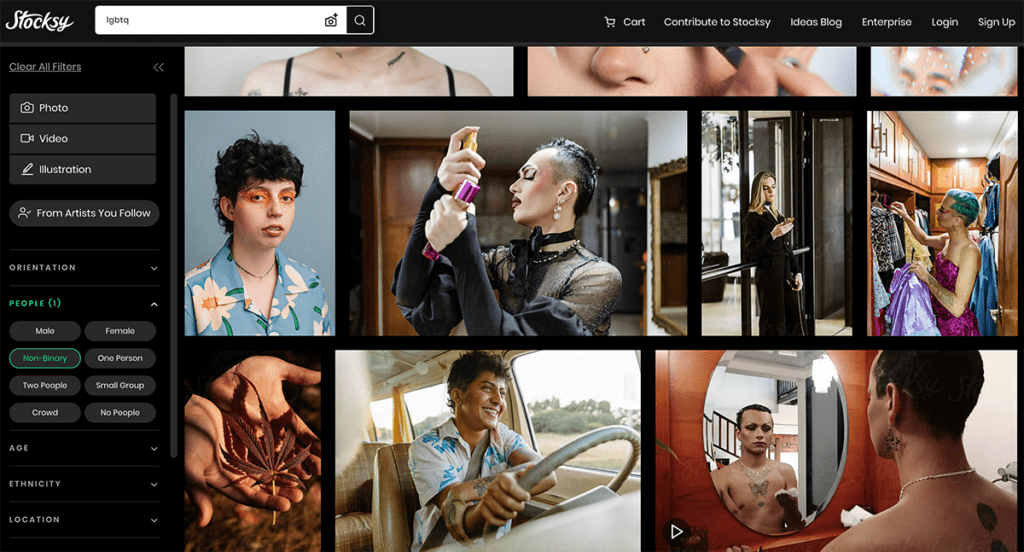
If you would like to source content created by LGBTQ+ contributors and members of our community, you can contact our Creative Research team for help.
Choosing to incorporate stock media that reflects the depth of LGBTQ+ experience in marketing campaigns is not only a smart business decision, but also a responsible and ethical one. Using stock photos that accurately reflect the diverse and nuanced experiences of queer individuals can help brands build a more meaningful connection with their LGBTQ+ audience and acknowledges and respects the diversity of the community and be committed to inclusivity.






